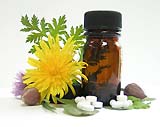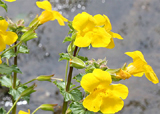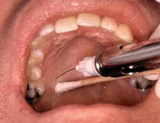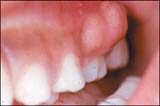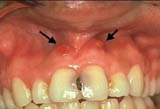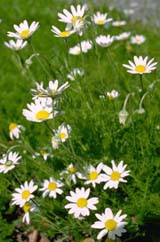Homoeopathy
Homoeopathic medicine in dentistry
A visit to a dentist is for most people not something that is looked forward to. More than the pain, it is the apprehension of pain that is disturbing. At times a dentist with his drilling machine tends to bring out subconscious fears. So much so, that some people may even demand a general anaesthetic for tooth extraction. However there are many homoeopathic remedies that can mitigate the anxiety and tension that a visit to a dentist necessarily entails and also avoid the painkillers and antibiotics.
The remedies that I will be mentioning with their brief indications are the ones which were most useful in my practice. By no means is this list exhaustive, but it would stand in good stead most of the time.
Category I
Apprehension of going to the dentist1) Aconitum napellus (Aconite) 30 or 200: this should be given preferably ½ to 1 hour before the visit especially for those people who are fidgety, restless, who try to delay or postpone the visit. A dry mouth with thirst is also one of the indications for Aconite.
2) Gelsemium sempervirens 30 or 200: here along with apprehension and fear, there is a tendency towards a marked trembling of the legs, a sense of weakness; sometimes with diarrhoea. It can be given a night before the visit and then just before the visit.
3) Argentum nitricum: this though not commonly indicated, this is well-known for anticipatory anxiety, especially in cases where there is a special desire for sweets. Diarrhoea is a well-known symptom and if not actually diarrhoea, there might be an uneasy feeling in the stomach with rumbling and gurgling.
4) Mimulus: this is a Bach flower remedy. It is very useful. Its main indication is all fears of known origin. Four pills four times a day for one to two days prior to the visit and two doses immediately before the visit could be given. It is particularly useful for children.
5) Arsenicum album: it is a remedy which I have not commonly utilised though some homoeopaths use it often . It is used for people who are extremely apprehensive and often mistrustful of their physician and would never dream of going alone to the physician, but take some family member along with them whom they trust. It would be wiser for such people to avoid tooth extraction for an hour or two preceding and succeeding noon.
6) Calendula officinalis: though not an apprehension remedy, it is still given to a patient with a low pain threshold and when given, it raises it.
Category II
Dental Trauma1) Arnica montana 200: one or two doses half to one hour before the extraction appreciably reduces the trauma of tooth extraction. It can also be given after Aconite as mentioned above. Arnica is also useful when there is soreness after extraction and also for sore spots on the gums after fitting new dentures.
2) Hypericum perforatum: this remedy is considered as the Arnica of the nerves and is given after Arnica in two doses. The pain of Hypericum is often of a shooting type and can spread from the socket of the involved tooth to the rest of the jaw bone. There are occasions when this remedy is very useful. After the anaesthesia wears off, there is an increase of pain not only at the injected site but also in the bed of the extracted tooth. Plugging the socket of the extracted tooth by a cotton swab dipped in Hypericum acts almost like an anaesthetic.
3) Ledum palustre: this remedy is useful when there is marked soreness at the site of injection itself or along the gums. It is also useful in soreness which has not responded to Arnica.
4) Staphysagria : this remedy is given whenever there is a cut or incision on the gums. Such a procedure is often done when there is an impacted wisdom tooth or when the gum is to be incised in order to remove a deeply embedded tooth root. Here one can alternate Arnica and Staphysagria for the first twenty hours.
5) Chamomilla 30: this has been advocated for the peculiar sensation of numbness which remains after tooth extraction. If Chamomilla fails to work Rhus tox can be given.
6) China officinalis: when numbness is accompanied by or follows more than expected blood loss, the patient is hypersensitive to pain, noise, and is of a sensitive refined temperament, think of China.7) Magnesia Phosphorica: one thinks of this remedy when there is muscle spasm. The masseter and temporalis muscles go into spasm or get periodical spasms. The patient cannot open his mouth and the condition is aggravated by cold and ameliorated by hot applications. Warm drinks ameliorate.
8) Ruta graveolens: I have given this particular medicine when the periosteum was injured or lacerated particularly while giving inferior dental nerve block. Apart from soreness in the bones, muscle spasm is also found in such situations.
9) Belladonna: is useful for throbbing pains after any periosteal injury or sometimes in the ‘dry socket syndrome’ occurring after extractions.
Category III
Root canal therapy
This is a special procedure in which the dentist tries to preserve the natural tooth. The procedure takes many days and is generally done under an antibiotic cover. However in half a dozen cases treated by me, I have given homoeopathic remedies throughout the length of treatment with excellent results. Arnica and Hypericum have been the main remedies on the days of the actual procedure and Calendula 30 Q.I.D. in between, as the remedy for preventing infection. Some people have advocated gentle mouth washes with a combination of five drops each of Calendula and Hypericum Q twice a day or after meals during the root canal treatment.
Category IV
BleedingIn those patients where one anticipates bleeding one could give Phosphorus 200 half an hour before extraction. There are basically three remedies which can be utilised after extraction.
1) A mica montana 200 or even higher, when there is much soreness and the blood is not bright red. When the bleeding persists, despite Arnica, think of Phosphorus and Hamamelis virginiana.
2) Phosphorus — Here the blood is bright red in colour.
3) Lachesis muta ; other remedies are Kreosotum and Alumen.
In Kreosotum it is said that the blood coagulates quickly. Also think of Arsenicum album after extraction if the bleeding is black in colour. Mercurius solubililis and Kreosoturn are used in bleeding associated with painful, ragged, swollen gum and a foul offensive smell from the mouth. In offensive caries, extraction if planned would be wiser. Give mouthwashes of Calendula and if necessary a few doses of Calendula 30 internally.
Category V
Tooth abscessIt can occur due to decay or trauma. Clinically speaking there are two types of abscesses:
1) One along the gums, i.e. peridental abscess commonly known as gum boil.
2) A root canal abscess which is a tiny abscess at the root of the tooth and is associated with mandibular swelling, pain, fever and other signs of closed space infections. Almost all abscesses are associated with some pain.
The remedies for toothache in general are over 60 in number. However here are some commonly used remedies for abscess along with pain.
1) Belladonna: here the pains are throbbing, start and cease suddenly, are aggravated by touch, pressure and even the slightest jar. The pains are associated with heat in the face, cheeks and even head. They may be strong enough to make the patient cry. Cold application often gives relief.
2) Hepar sulphuris calcareum: this is a remedy where the teeth are sensitive to pressure, e.g. the patient cannot tolerate the touch of even the tongue to the tooth or the opposite tooth. Hepar is associated with chilliness, fever, a measure of general hypersensitivity and perhaps a foul temper and irritability. The proper potency is needed. Lower potencies i.e. 3X and 6X often hasten pus formation, so one should not use these in case of root canal abscess formations. Hepar 30 or 200 or even higher is used when one wants to resolve such tooth abscesses. However for gum boil Hepar in low potencies will not have an aggravating effect.
3) Silica: traditionally utilised where an abscess has formed a channel and has value after Hepar. However in my experience Silica 6C Q.I.D. has often been useful both for gum boils and root canal therapy with painful submandibular glands. Once pus has formed in the channel, one can give Silica for 8 to 10 days more and then stop. If the condition recurs one could give Silica in higher potencies.
4) Myristica Sebifera: this is particularly useful when there is an abscess around the wisdom tooth along with a sensation of numbness. Some people consider Myristica superior to Silica in such conditions. I personally don’t have much experience of Myristica for tooth problems though I have utilised it in abscesses of the pulp of the fingers.
Category VI
Toothache in general
If there is pain after a filling, three remedies which one can think of are Arnica, Hypericum and Hepar, in that order.
If pain still persists, it is quite possible that an abscess is forming. In such cases it is necessary to remove the filling.
Belladonna is also one of the remedies for toothache without abscess formation with the same modalities as given above.
Mercurius solubilis is to be thought of when the tooth is sensitive to thermal changes, and of course when there is offensiveness, slimy and excessive salivation.
Toothaches notoriously occurring in rainy weather require Rhus tox and Mercurius solubilis. When in dry weather, Causticum.
Magnesia Phosphorica could be given for any toothache which is better by applied heat and aggravated by cold.
Toothaches which are ameliorated by heat from a distance may require Arsenicum album. When there is a distinct amelioration by lying on the painful side think of Bryonia.
Coffea Cruda is a remedy which one thinks of when the toothache is better by heat and aggravated by cold.
Chamomilla has toothache with extreme hypersensitivity to pain, especially in nervous individuals who are better by warmth and not worse by cold.
China is one remedy with a rare and peculiar symptom in nursing mothers. Here there is pain when the infant is nursing.
Toothache is common in pregnancy. In such cases, I routinely give Calcarea Phosphorica in biochemic potencies for a few days. However Sepia and Calcarea Carbonica would be the most frequently indicated remedies. Sometimes a swab of Plantago major Q or even Kreosotum Q applied to the caries tooth has worked.
The above remedies for toothache are by no means exhaustive and readers are asked to refer to Kent and Boericke.
Dr. D.E. Mistry, an ex-professor of Surgery at the V.M.M. Medical College, Solapur, is also an experienced homoeopath.
Share with us (Comments, contributions, opinions)
When reproducing this feature, please credit NAMAH, and give the byline. Please send us cuttings.

